5 Tips triathletes can learn from track cyclists
What triathletes can learn from track riders to nail a faster bike split this season.
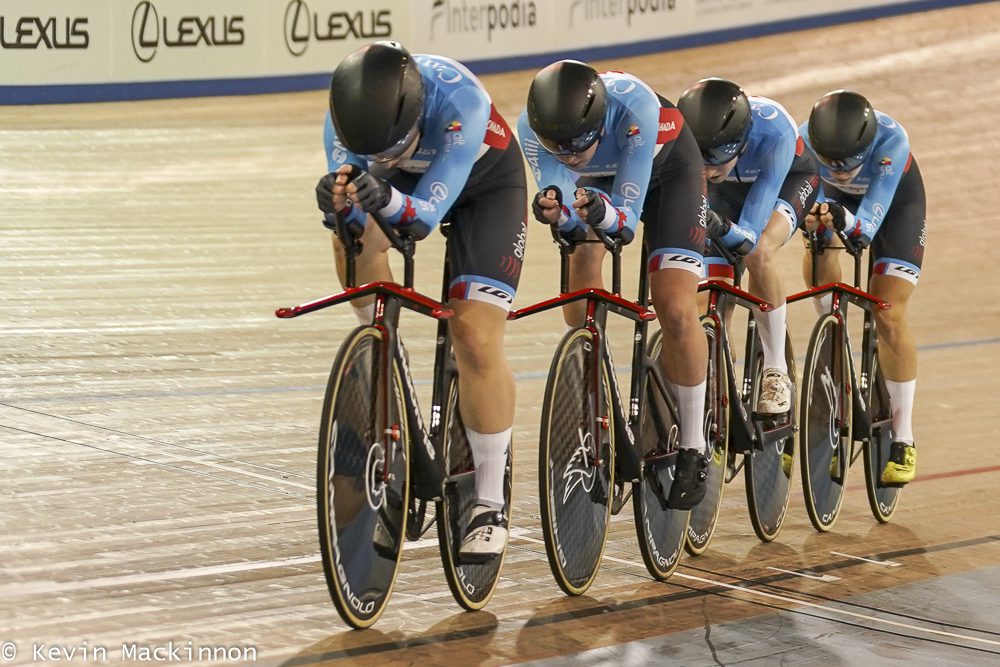
Some of the world’s best track cyclists were in Canada last weekend for the Milton UCI Track World Cup. Some tips their bike set ups can provide that will help you improve your triathlon bike performances.
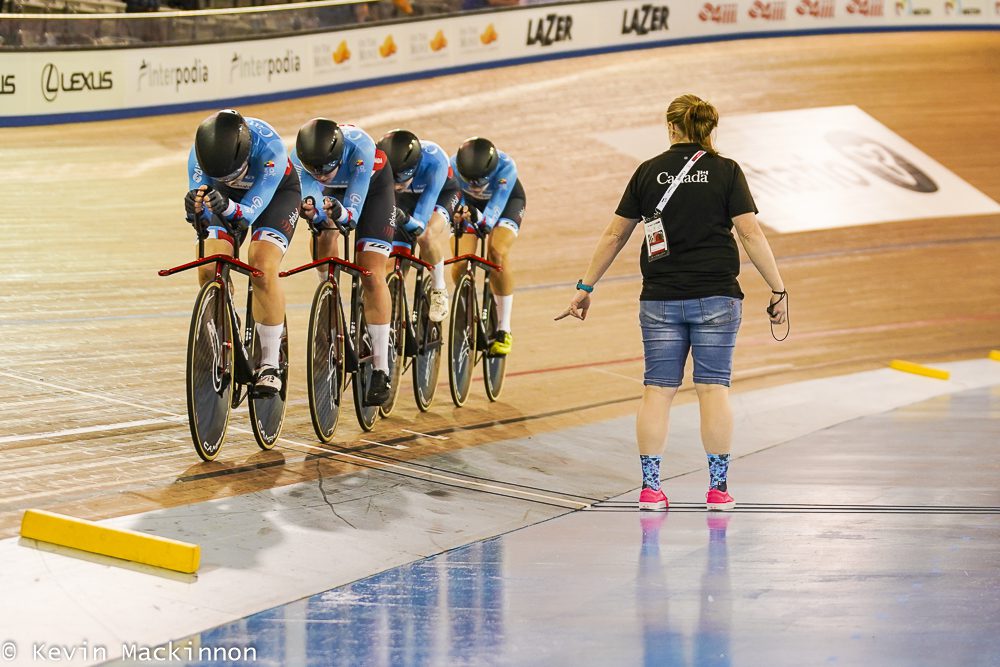
When it comes to pursuit racing on the track, aerodynamics play a huge role in a team’s success. At the highest levels it’s taken for granted that the athletes are going to push impressive power numbers and be able to ride just a few centimetres behind their team mates. Since hundredths and thousandths of a second can make a difference over the 4 km races, even just tiny aerodynamic benefits make a huge difference.
With that in mind, we have a look at last week’s team pursuit efforts from a triathlete’s perspective.
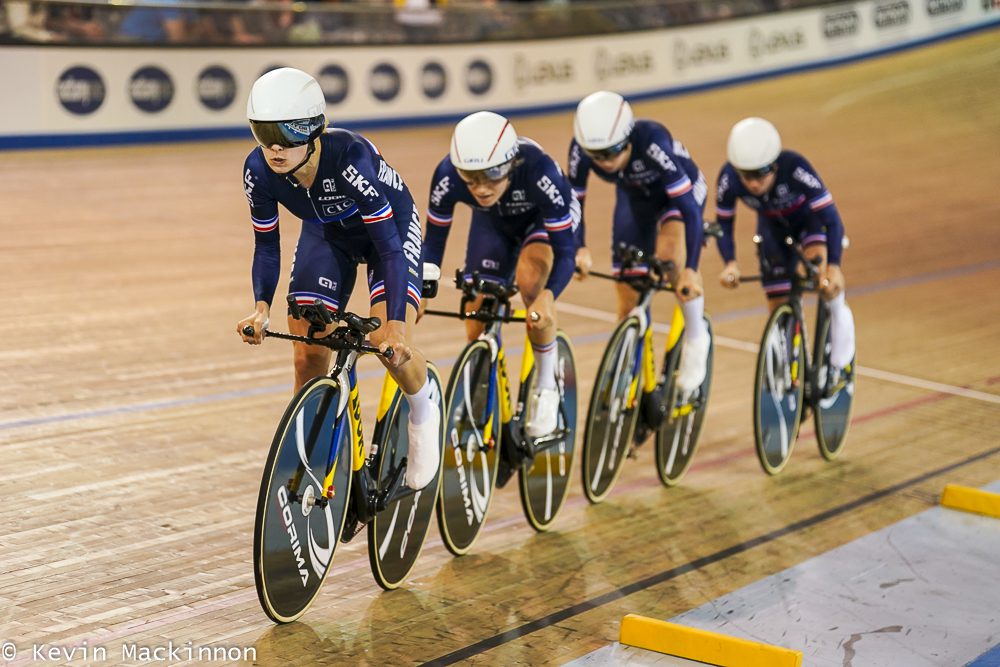
1. Helmet choices: When it comes to aerodynamics, a helmet can make a huge difference. Team France (above) used Giro’s Aerohead Ultimate helmet. You’ll see a lot of Giro’s Vanquish helmets out on triathlon race courses – it features a very similar shape, but has more vents.
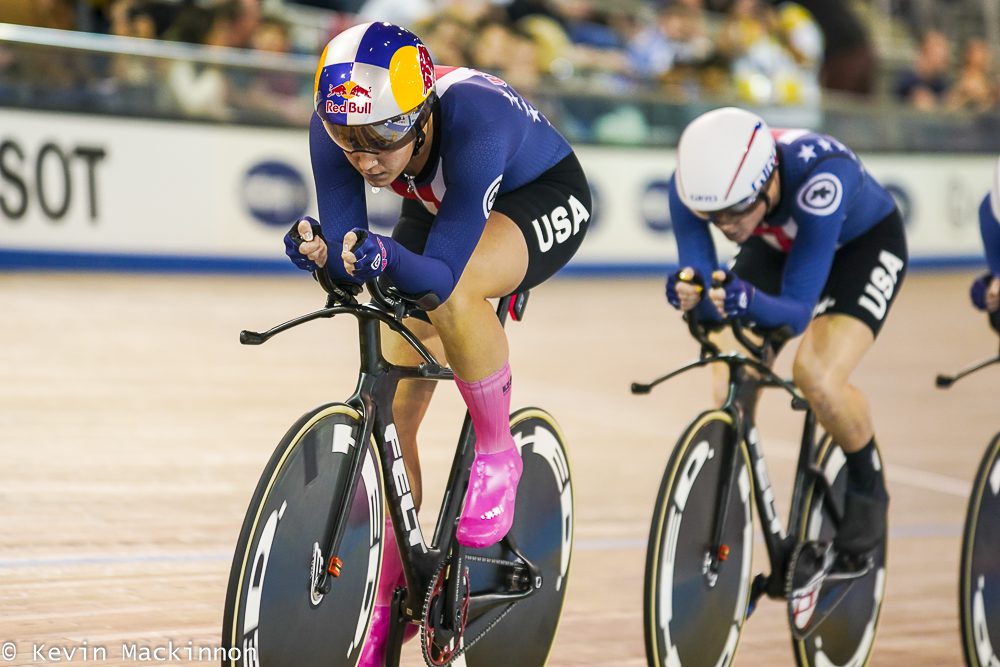
2. Equipment: See the bikes the US team are using? Yep, Felt – the same company that got its start building triathlon bikes in the late 80s. Hed wheels? Steve and Annie Hed started the company at about the same time and spent a lot of time in Kona helping the world’s best triathletes excel. The cycling world might have taken a while to embrace the message us triathletes were trying to send them way back when – that aero bars, bikes and wheels designed for the aero position make a huge difference – but they certainly get it now. Now it’s our turn to learn from them as they take aerodynamics to the next level.
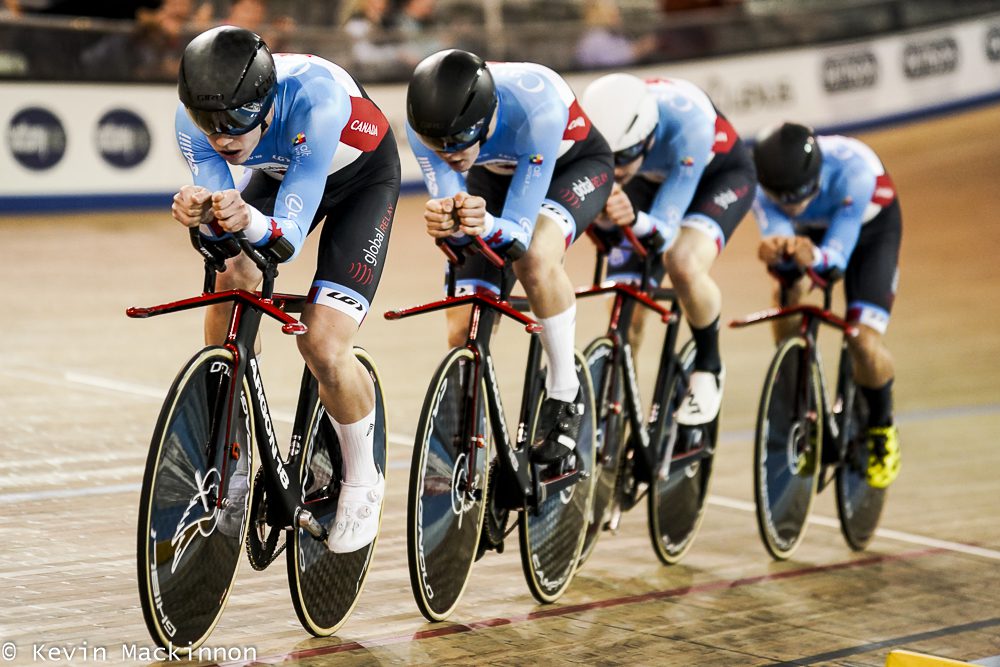
3. Equipment Part 2: Like Felt did before it, Argon 18 came to the attention of the cycling in many ways thanks to its triathlon chops. Team Canada has partnered with the Quebec-based company to take advantage of the aero frames, combining the speedy bikes with one of cycling’s most legendary parts manufacturers – Campagnolo. The Ghibli disc wheels certainly seem to be helping team Canada surge towards the top of the team-pursuit world standings as they drive towards the Tokyo Olympics.

4. Bike handling matters: Watching team pursuit riders execute a change over at speeds of almost 60 km/ hour shows just how important bike handling skills are for track riders. While you won’t have to worry about being on a wheel riding at that kind of speed in a triathlon, your bike handling ability will play a huge factor in your overall performance. Watch an athlete like Jan Frodeno out on a bike course – his upper body hardly moves and he maintains an incredibly straight line throughout his ride. The smoother you are on the bike, the faster you’ll be, too. So, while you can gain lots of fitness hammering on a trainer, it’s important to spend lots of time working on your bike handling – that can be on a track or just outside.
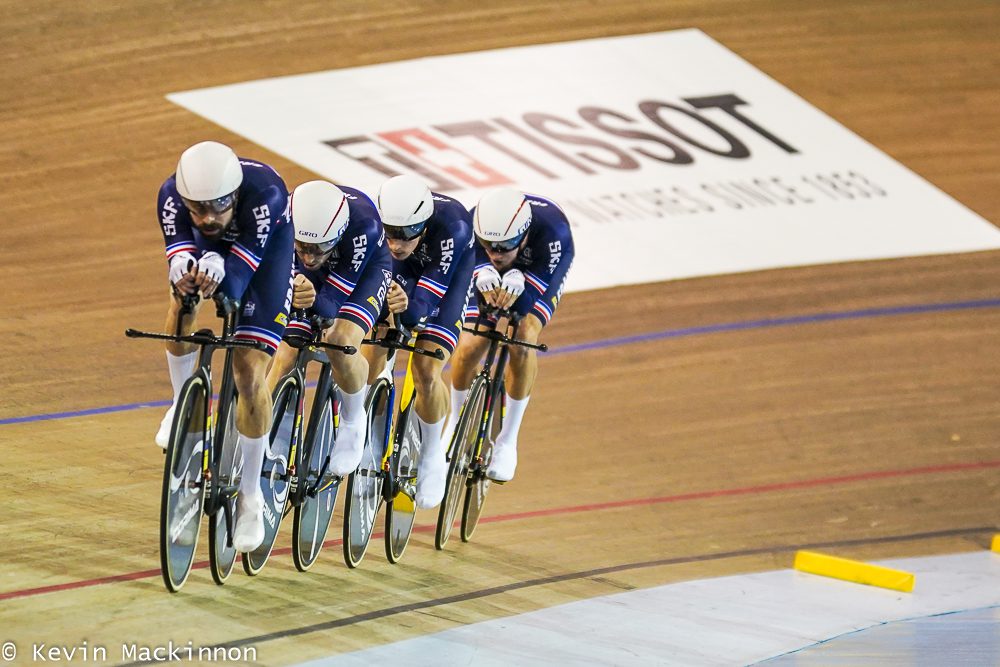
5. Dial in your own position: Looking at the French men’s team above you can see a variety of different set ups. While some riders will be a bit higher, the one consistent feature is how narrow their arms are on the bars. Team pursuit riders spend lots of time working on the optimal position … for them. Everything is analyzed including their head position (which can often affect the choice of helmet) and even how much they shrug their shoulders while riding on the aero bars. Finding the ideal position so you can push the highest power numbers while also maintaining an aero position is a critical step to improving your performance in a non-drafting triathlon.
